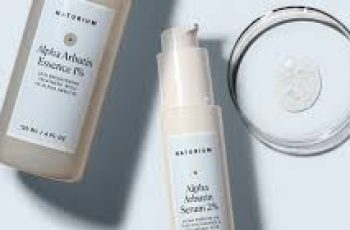
10 Dos and Don’ts for Scar Prevention
Some people think of their scars as battle wounds — and they are nothing to be ashamed of, but caring for fresh wounds can help prevent them from leaving scars. Follow these tips from dermatologists to do just that.
Scars are a natural part of the body’s healing process. When skin is damaged from an accident or injury, the body builds new tissue made from collagen to close those gaps, according to the Cleveland Clinic. “Scars form after the healing process because the new collagen made to fill in the wound is not the same texture as the surrounding skin,” explains Jill Salyards, DO, a board-certified dermatologist and founder of Refine Dermatology in Knoxville, Tennessee. “Most wounds result in some degree of scarring, except for very superficial wounds on the surface.”
Not all scars are the same. The type of scar and its final appearance are, in part, influenced by how the wound is cared for while it’s healing. The severity of the wound can also determine the degree of scarring. “The deeper the injury, the greater the likelihood of scarring,” says Jeremy Brauer, MD, a board-certified dermatologist and founder of Spectrum Skin and Laser in Purchase, New York. Scars are typically flat or raised. Normal wounds should yield flat scars, which are similar in color to your skin tone and flatten over time. These are less visible than raised scars, such as keloid and hypertrophic scars, which form from thick tissue and can appear dark and red compared to the surrounding skin. Stretch marks are also a type of scar.
Scars that stand out can draw unwanted attention and create insecurities, so some people may want to prevent or minimize them while the wound is still healing. Others may want to improve painful or uncomfortable scars. But preventing scars is ultimately a personal decision. If your scars don’t cause any uncomfortable side effects, such as pain or itching, there’s no reason to worry about treatment. Some people may even be proud of their scars, such as women who have undergone C-sections or other people who have been through serious health events and see their scars as battle wounds.
How you care for a wound can minimize or even prevent scarring if you wish to do so, according to the American Academy of Dermatology (AAD). With that in mind, here are 10 dos and don’ts to prevent fresh wounds from leaving scars.
1. Do Keep the Wound Clean
Broken skin from a wound increases the risk of infection from germs, per the National Library of Medicine. It will heal in stages, and dermatologists recommend keeping the wound clean throughout the entire process.
“Immediately after a wound occurs, it should be kept clean,” Dr. Salyards says. Your first instinct may be to grab a bottle of hydrogen peroxide or other antiseptic, but she says this could actually make scarring worse. “Hydrogen peroxide can increase inflammation and destruction to the healing skin, increasing scarring,” she explains. Antiseptics like rubbing alcohol and hydrogen peroxide can kill skin tissue and shouldn’t be used to clean wounds, according to a review published in 2019 in Plastic and Reconstructive Surgery Global Open.
Dr. Brauer suggests continuing to clean the wound until it’s fully healed. Don’t overthink it — the AAD recommends keeping wounds clean with mild soap and water. The Cleveland Clinic also says soap and water are the way to go, adding that you should wash and dry your hands first.
2. Don’t Wait Too Long to Get Stitches
Medical intervention isn’t always necessary for wounds to heal, but depending on the severity of your wound, you might benefit from getting stitches. Scars form after the wound is healed, and getting stitches can help close and heal the wound quicker. They may also help minimize the appearance of scarring, per the AAD.
You might want to wait to see if deep cuts improve on their own before getting stitches, but dermatologists recommend against this. “If stitches are needed, they must be sewn as soon as possible when the injury is new,” says Aanand N. Geria, MD, a board-certified dermatologist and founder of Geria Dermatology in Rutherford, New Jersey. “If too much time passes, germs or bacteria can accumulate in the wound and a dermatologist may elect not to stitch because of the risk of infection.”
If you are unsure whether you need stitches, Dr. Geria suggests seeing a doctor immediately for further evaluation.
3. Do Keep the Wound Moist
After cleaning the wound, keep it moist to prevent scars, Brauer says. “Generally, any emollient like petrolatum will delay scab formation,” he says. According to a previous review, keeping wounds moist results in reduced scar formation, compared with treatment in dry environments. Plenty of research has been done on wet, moist, and dry healing for scar formation, and wet or moist healing has been shown to achieve the fastest healing and least amount of scarring, per a review in the International Journal of Inflammation.
“Moisturize with petroleum jelly and cover with a bandage,” recommends Salyards. “This should be continued until the open wound is completely healed with new skin or until sutures are removed.”
4. Don’t Pick at the Wound
In general, dermatologists recommend against picking at your skin under any circumstances. Whether it’s an active breakout or fresh wound, picking at it seems to make matters worse. It can worsen acne and scarring, per the AAD.
In addition to picking, refrain from scratching or manipulating wounds or newly formed scabs. “Picking at wounds during the healing process leads to increased inflammation and scarring,” Salyards says. It can also increase the risk of infection from bacteria on your hands.
Some people with dermatillomania compulsively pick at their skin, but this can lead to injury, infection, and scarring, according to the Cleveland Clinic. Picking your skin can reopen old wounds, ultimately delaying their healing.
So, let your skin recover naturally. You should only touch wounds with clean hands and only when you need to clean and moisturize them or change their dressings.
5. Do Use a Wound Dressing
A wound dressing comes into direct contact with the wound. It helps protect the wound, keep it moist, and prevent it from exposure to the surrounding environment. Dressings like bandages and gauze help keep the wound clean and should be changed often, per the Mayo Clinic. Some dressings remove wound drainage and dead tissue when changed, according to the National Library of Medicine.
“Keep wounds covered with a dressing that has a nonstick surface,” Brauer recommends. “Don’t expose the wound to air or let it dry out.” Dressings may use a glue or adhesive to stick to the surrounding skin, however.
Wearing a wound dressing also has the benefit of applying pressure to the wound, per the AAD, which recommends pressure therapy for reducing and preventing scars.
6. Don’t Skip Sun Protection
Ideally, everyone should wear sunscreen on a daily basis. It protects against skin cancer and sun damage, according to the Skin Cancer Foundation. If you’re dealing with a recent wound and want to reduce the potential scarring, dermatologists say to take sun protection even more seriously.
“Wearing SPF 30 or greater daily and reapplying every two hours while outdoors is the general recommendation,” Salyards says. “Sunscreen use can be effective in preventing scars.” Brauer suggests taking it a step further and keeping the area out of sunlight altogether.
Essentially, shielding your scar from the sun can help it fade faster. If you’ve ever gotten a tan, you’re familiar with the process of sunlight making skin appear darker, and scars are no exception to this phenomenon. According to a previous review, protection from ultraviolet (UV) rays reduced scar hyperpigmentation from a pigment called melanin from being produced.
The AAD recommends choosing a broad-spectrum and water-resistant sunscreen with SPF 30 or higher for daily use. Other ways to protect skin against harmful UV rays include seeking shade, wearing sun-protective clothing, and avoiding indoor tanning beds.
7. Do Use Silicone Scar Sheets
Although petroleum jelly and vitamin E haven’t been proven effective at reducing scars, per the National Library of Medicine, silicone scar gels and gel sheets have. Other options may still be beneficial for keeping an open wound moist, but the dermatologists we spoke to recommend switching to silicone sheets for scar prevention once the wound is healed.
“Silicone scar sheets can help prevent or improve new scars if used right after an injury,” says Geria, adding that it’s important to use them during the first year a scar is present. After that, they may not be as effective. So don’t waste any time.
The effectiveness of silicone gel and gel sheets is nothing new. They remain the preferred, first-line treatment of scar management among healthcare professionals, according to a previous review. A meta-analysis published in 2020 in International Wound Journal suggests silicone gel significantly reduces scar pigmentation and height, with sheets being just as effective.
“Silicone scar gels or sheets should be used over the wound once it is healed, as it has been shown to be effective in scar prevention,” says Salyards. “When used regularly for 2 to 3 months, silicone has been shown to be effective in preventing and improving the appearance of scars.”
8. Don’t Overexert the Area
If you have a new scar, try not to move the area too much, per the Cleveland Clinic. “Stay still,” says Geria. “When a scar moves, it alters its formation and turns it into a thicker or wider scar,” he explains. “Do your best to allow the wound to heal by not overexerting the area.”
What you can do instead is gently massage the scar. “Gently massaging early on can greatly impact healing, especially during the first year,” says Geria, adding that this helps to break up tissue that could lead to thick scars. More research is needed, but massage therapy may alleviate pain and reduce scar thickness in hypertrophic and burn scars, according to a review published in 2020 in the Journal of Alternative and Complementary Medicine.
9. Do Be Wary of Scar Creams and Topical Products
Before you reach for the best-selling scar creams, think twice. Some dermatologists are skeptical about whether they’re worthwhile. “Not all scar creams are created equally,” Salyards says. Her recommendation is generally to use silicone sheets in lieu of scar creams.
If you’d like to use a scar cream, opt for one with silicone gel. Silicone gel and silicone scar sheets have been shown to be equally effective, according to a trial published in 2020 in Plastic and Reconstructive Surgery Global Open. Both significantly improve scar outcomes, while the evidence for other topical scar managements is lacking, per a review published in 2020 in Dermatologic Surgery.
10. Don’t Have Unrealistic Expectations
Wounds take time to heal, and any resulting scars take time to fade. You’ll have to be patient and set realistic expectations for how your scars will look and potentially improve.
Even if you do everything right — keep your wounds clean and moist, use silicone scar sheets, wear sunscreen, and so on — some factors are out of your control. Some people are more prone to keloid scars, such as people with darker skin tones, according to one review.
It’s also unlikely that a scar will disappear completely. Scars are permanent, though some fade over time. If your scars bother you, some treatments can help make their appearance less visible.
Getting Treatment for Scars
Preventing wounds is the best way to prevent scarring, but caring for active wounds is the next best thing. Keep your wound clean and moist by washing it with warm, soapy water and using wound dressings like gauze. Once the broken skin has healed, swap out dressings for silicone gel scar sheets, which are the gold standard for minimizing fresh scars. With consistent use, you can expect to see improvements within a couple of months.
With time, scars naturally fade on their own. Yet keloid scars don’t go away. Depending on the type of scar, treatments at a dermatologist’s office may help. According to John Hopkins Medicine, the following scar treatments are available:
Lasers
Dermabrasion
Chemical peels
Collagen or steroid injections
Surgical revision
Cryosurgery
Skin grafts
Talk to your dermatologist to determine the right scar treatment for you.


